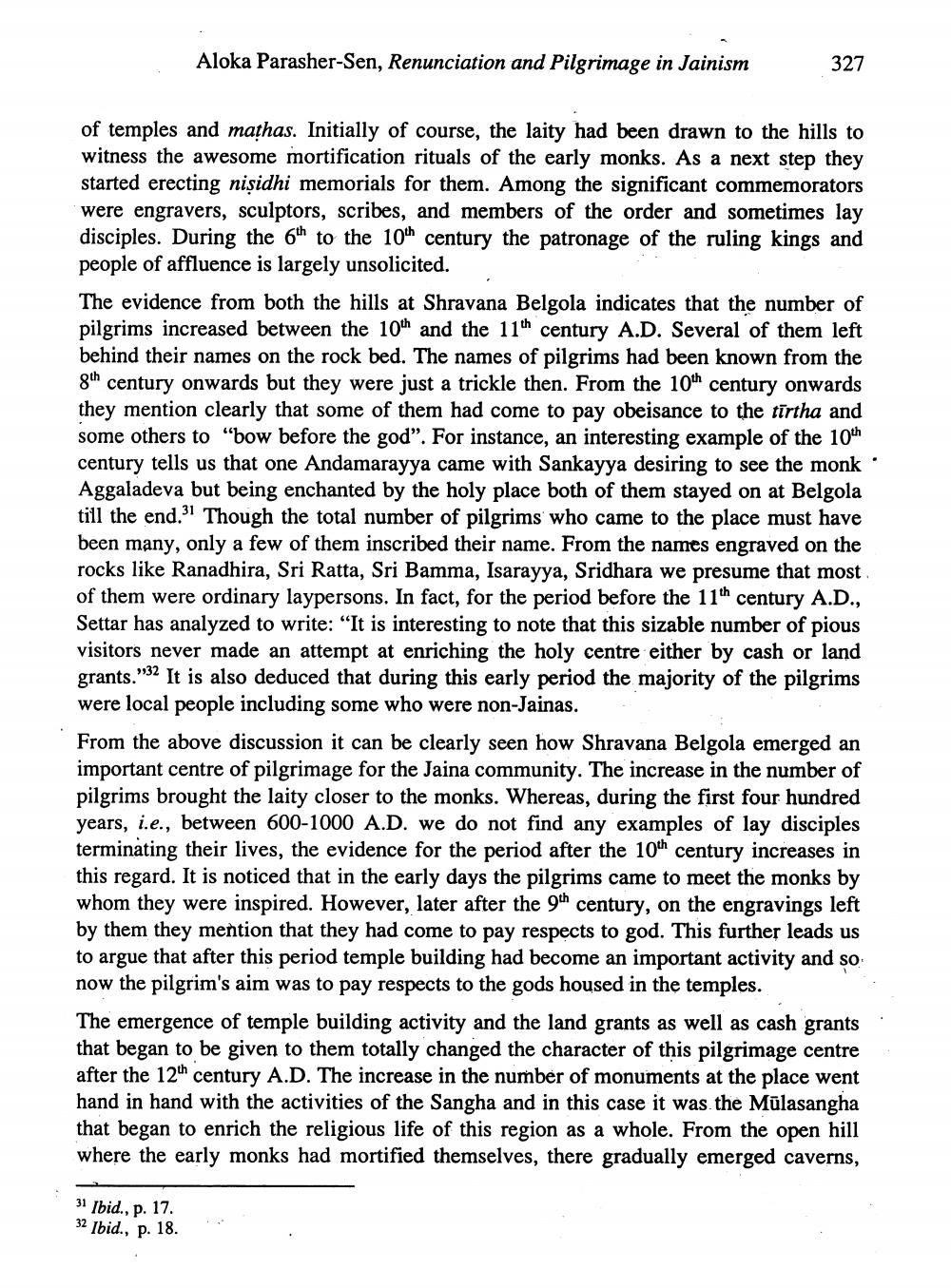________________
Aloka Parasher-Sen, Renunciation and Pilgrimage in Jainism
327
of temples and mathas. Initially of course, the laity had been drawn to the hills to witness the awesome mortification rituals of the early monks. As a next step they started erecting nisidhi memorials for them. Among the significant commemorators were engravers, sculptors, scribes, and members of the order and sometimes lay disciples. During the 6th to the 10th century the patronage of the ruling kings and people of affluence is largely unsolicited The evidence from both the hills at Shravana Belgola indicates that the number of pilgrims increased between the 10th and the 11th century A.D. Several of them left behind their names on the rock bed. The names of pilgrims had been known from the 8th century onwards but they were just a trickle then. From the 10th century onwards they mention clearly that some of them had come to pay obeisance to the tīrtha and some others to "bow before the god”. For instance, an interesting example of the 10th century tells us that one Andamarayya came with Sankayya desiring to see the monk Aggaladeva but being enchanted by the holy place both of them stayed on at Belgola till the end. Though the total number of pilgrims who came to the place must have been many, only a few of them inscribed their name. From the names engraved on the rocks like Ranadhira, Sri Ratta, Sri Bamma, Isarayya, Sridhara we presume that most of them were ordinary laypersons. In fact, for the period before the 11th century A.D., Settar has analyzed to write: "It is interesting to note that this sizable number of pious visitors never made an attempt at enriching the holy centre either by cash or land grants."32 It is also deduced that during this early period the majority of the pilgrims were local people including some who were non-Jainas. From the above discussion it can be clearly seen how Shravana Belgola emerged an important centre of pilgrimage for the Jaina community. The increase in the number of pilgrims brought the laity closer to the monks. Whereas, during the first four hundred years, i.e., between 600-1000 A.D. we do not find any examples of lay disciples terminating their lives, the evidence for the period after the 10th century increases in this regard. It is noticed that in the early days the pilgrims came to meet the monks by whom they were inspired. However, later after the 9th century, on the engravings left by them they mention that they had come to pay respects to god. This further leads us to argue that after this period temple building had become an important activity and so now the pilgrim's aim was to pay respects to the gods housed in the temples. The emergence of temple building activity and the land grants as well as cash grants that began to be given to them totally changed the character of this pilgrimage centre after the 12th century A.D. The increase in the number of monuments at the place went hand in hand with the activities of the Sangha and in this case it was the Mūlasangha that began to enrich the religious life of this region as a whole. From the open hill where the early monks had mortified themselves, there gradually emerged caverns,
31 Ibid., p. 17. 32 Ibid., p. 18.




